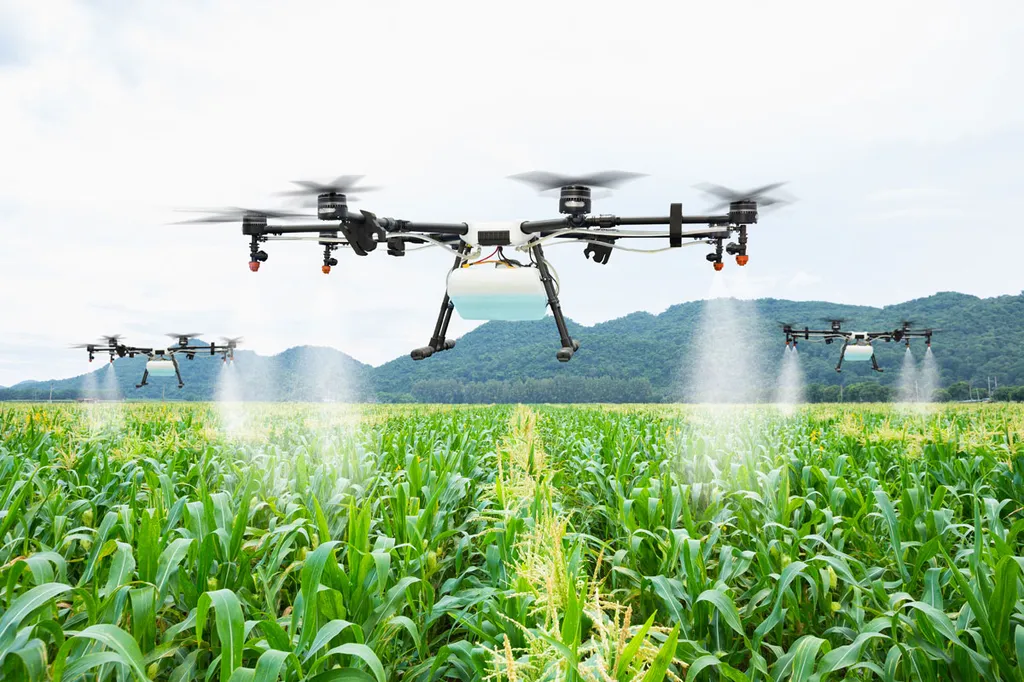In the ever-evolving landscape of agricultural technology, a new study published in EDIS by Wenhao Liu of the University of Florida and Yiannis Ampatzidis of the UF/IFAS Department of Agricultural and Biological Engineering is shedding light on the transformative potential of spraying drones. These unmanned aerial vehicles (UAVs) are not just a futuristic concept; they are already making waves in the agriculture sector, promising to revolutionize the way farmers approach crop management.
Spraying drones are equipped with advanced sensors and imaging technology, enabling them to collect real-time data on crop health and environmental conditions. This data-driven approach allows for precise application of pesticides, fertilizers, and nutrients, significantly reducing waste and environmental impact. “The precision offered by spraying drones is unparalleled,” says Liu. “They can target specific areas of a field that need attention, ensuring that resources are used efficiently and effectively.”
The commercial implications of this technology are substantial. Traditional methods of aerial spraying often result in over-application, leading to increased costs and potential environmental damage. Spraying drones, on the other hand, can optimize the use of inputs, leading to cost savings for farmers. Moreover, the ability to monitor and manage crops in real-time can improve yield quality and quantity, directly impacting the bottom line.
Beyond pesticides and fertilizers, spraying drones are also being explored for their potential in irrigation, seeding, biological control, pollination, and even aquaculture feeding. This versatility makes them a valuable tool for farmers looking to adopt more sustainable and efficient practices. “The versatility of spraying drones is one of their most compelling advantages,” notes Ampatzidis. “They can be deployed for a wide range of tasks, making them a flexible and cost-effective solution for modern agriculture.”
The study highlights several key advantages of spraying drones over traditional methods. For instance, they can access hard-to-reach areas, such as steep terrains or dense canopies, which are often challenging for ground-based equipment. Additionally, their ability to operate autonomously reduces the need for manual labor, addressing the ongoing challenge of labor shortages in the agriculture sector.
Looking ahead, the research suggests that the adoption of spraying drones could pave the way for more advanced and integrated farming systems. As technology continues to evolve, these drones could become an integral part of precision agriculture, working in tandem with other innovations like satellite imagery, IoT sensors, and AI-driven analytics to create a more sustainable and productive agricultural landscape.
The findings of this study, published in EDIS, underscore the growing importance of spraying drones in the agriculture sector. As farmers increasingly seek ways to enhance efficiency and sustainability, these drones offer a promising solution. With continued research and development, they could well become a staple in the modern farmer’s toolkit, shaping the future of agriculture in profound ways.

